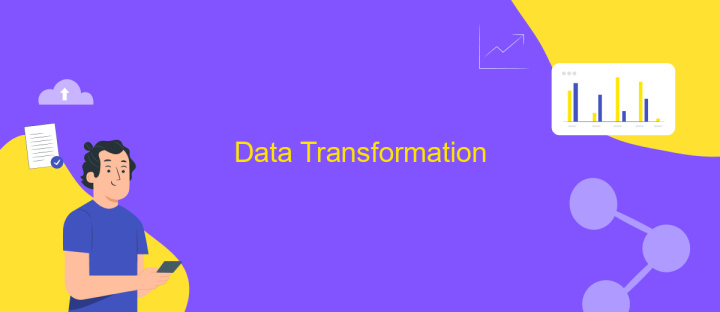Mining Data ETL
Mining Data ETL (Extract, Transform, Load) is a crucial process in data management, enabling organizations to efficiently handle large volumes of data. This article delves into the significance of ETL in mining data, exploring how it facilitates data integration, enhances data quality, and supports informed decision-making. By understanding ETL processes, businesses can unlock valuable insights and drive strategic growth.
Introduction
Mining Data ETL (Extract, Transform, Load) is a critical process in data management, enabling organizations to efficiently gather, refine, and utilize data from various sources. This process ensures that data is accurate, consistent, and ready for analysis, driving informed decision-making and strategic planning.
- Extract: Collecting data from multiple sources, such as databases, APIs, and flat files.
- Transform: Cleaning, normalizing, and enriching the data to meet specific business requirements.
- Load: Importing the transformed data into a target system, such as a data warehouse or data lake.
Integrating data from diverse sources can be challenging, but tools like ApiX-Drive simplify this process by automating data extraction and integration. ApiX-Drive allows seamless connectivity between various platforms, ensuring that data flows smoothly and accurately into your ETL pipeline. By leveraging such services, organizations can enhance their data management practices, leading to more reliable insights and better business outcomes.
Data Extraction

Data extraction is the initial step in the ETL process, involving the retrieval of data from various sources. This data can originate from databases, APIs, flat files, or web scraping. The goal is to gather data in its raw form, without any transformation or aggregation, ensuring that all necessary information is captured for subsequent processing. Effective data extraction requires understanding the structure and format of the source data, as well as establishing reliable connections to these data sources.
Integrating multiple data sources can be complex, but services like ApiX-Drive streamline this process by offering user-friendly interfaces and pre-built connectors. ApiX-Drive supports a wide range of applications, allowing users to set up automated data extraction workflows with minimal technical expertise. By leveraging such tools, organizations can efficiently extract data from diverse sources, ensuring a consistent and accurate flow of information into their ETL pipelines. This automation not only saves time but also reduces the risk of errors associated with manual data extraction.
Data Transformation

Data transformation is a crucial step in the ETL process, involving the conversion of raw data into a format suitable for analysis. This stage enhances data quality and consistency, making it more valuable for business intelligence and decision-making processes.
- Data Cleaning: This involves removing duplicates, correcting errors, and handling missing values to ensure data accuracy.
- Data Normalization: Converting data into a standard format to facilitate easier analysis and integration.
- Data Aggregation: Summarizing data to provide a comprehensive overview, which is especially useful for reporting and analytics.
- Data Enrichment: Enhancing data by integrating additional information from various sources, such as third-party APIs or internal databases.
Integrating various data sources can be streamlined using services like ApiX-Drive, which automates the process of connecting and syncing different platforms. This not only saves time but also reduces the risk of errors during data transformation. By leveraging such tools, organizations can ensure that their data is both accurate and actionable, ultimately leading to more informed business decisions.
Data Loading

Data loading is a crucial step in the ETL (Extract, Transform, Load) process, where transformed data is moved into a target system, such as a data warehouse or database. This step ensures that the data is readily available for analysis and reporting purposes. Efficient data loading can significantly impact the performance and usability of the data system.
Various methods and tools can be employed to load data, each with its own advantages and considerations. It is essential to choose the right approach based on the volume of data, the frequency of updates, and the specific requirements of the target system. Modern data integration services, such as ApiX-Drive, offer robust solutions for automating data loading processes, ensuring accuracy and consistency.
- Batch Loading: Suitable for large volumes of data, typically performed during off-peak hours.
- Real-Time Loading: Ideal for scenarios requiring immediate data availability, often using streaming technologies.
- Incremental Loading: Efficient for updating only the data that has changed since the last load.
Choosing the appropriate data loading method and leveraging services like ApiX-Drive can streamline the ETL process, reduce manual intervention, and enhance data reliability. By automating the data loading process, organizations can achieve better data quality and make more informed decisions based on up-to-date information.
Conclusion
In conclusion, the process of Mining Data ETL (Extract, Transform, Load) is integral to transforming raw data into valuable insights. This process involves extracting data from various sources, transforming it to fit operational needs, and loading it into a data warehouse. By streamlining these steps, businesses can achieve better data accuracy and efficiency, ultimately leading to more informed decision-making.
Moreover, the integration of services like ApiX-Drive can significantly enhance the ETL process. ApiX-Drive allows for seamless data integration between various platforms, reducing the complexity and time required for data transformation. This not only simplifies the workflow but also ensures that data is consistently up-to-date and readily available for analysis. By leveraging such tools, organizations can focus more on deriving insights and less on the technical challenges of data management.
FAQ
What is ETL in the context of mining data?
How can I automate the ETL process for mining data?
What are the common challenges in ETL for mining data?
How do I ensure data quality during the ETL process?
What are the best practices for designing an ETL workflow for mining data?
Do you want to achieve your goals in business, career and life faster and better? Do it with ApiX-Drive – a tool that will remove a significant part of the routine from workflows and free up additional time to achieve your goals. Test the capabilities of Apix-Drive for free – see for yourself the effectiveness of the tool.

